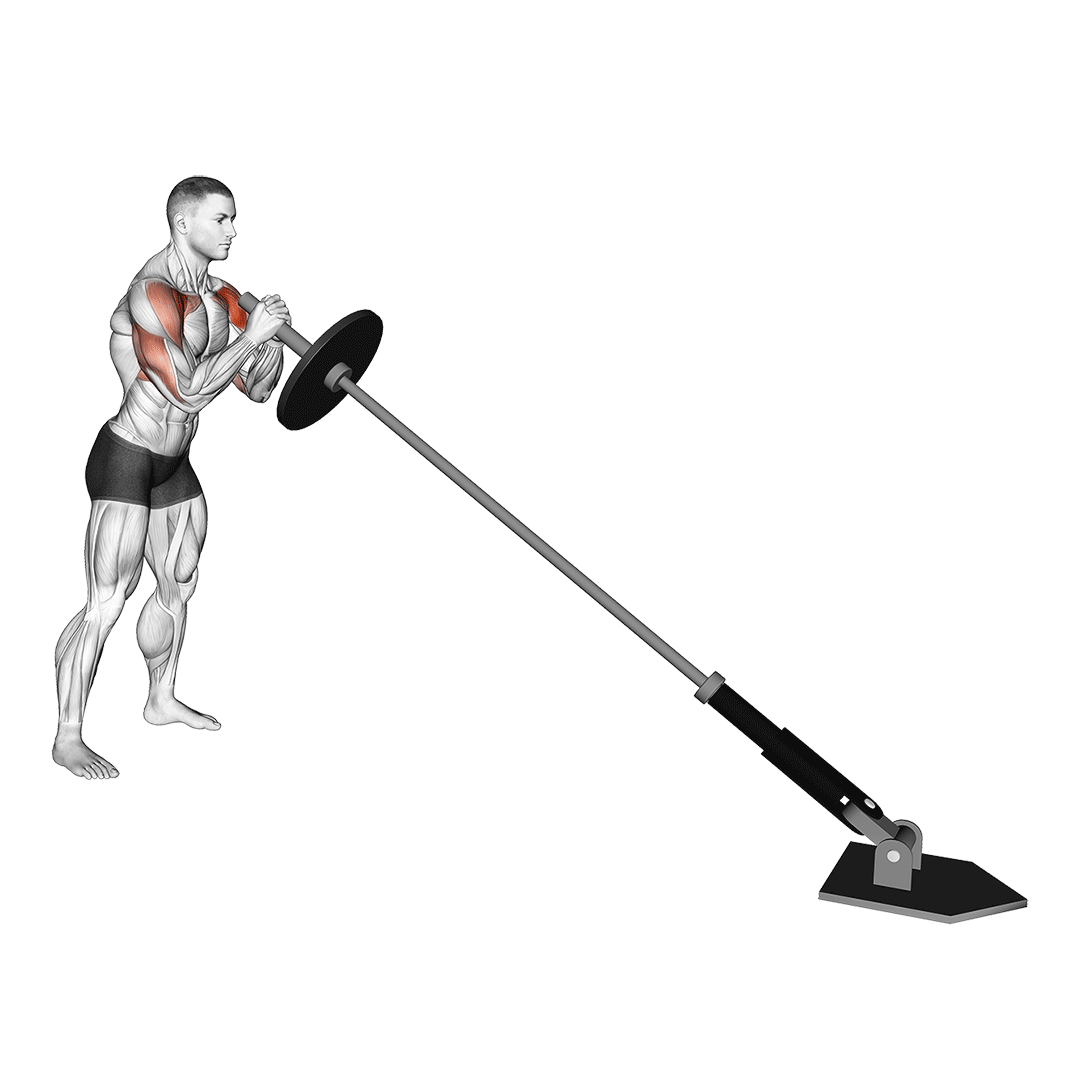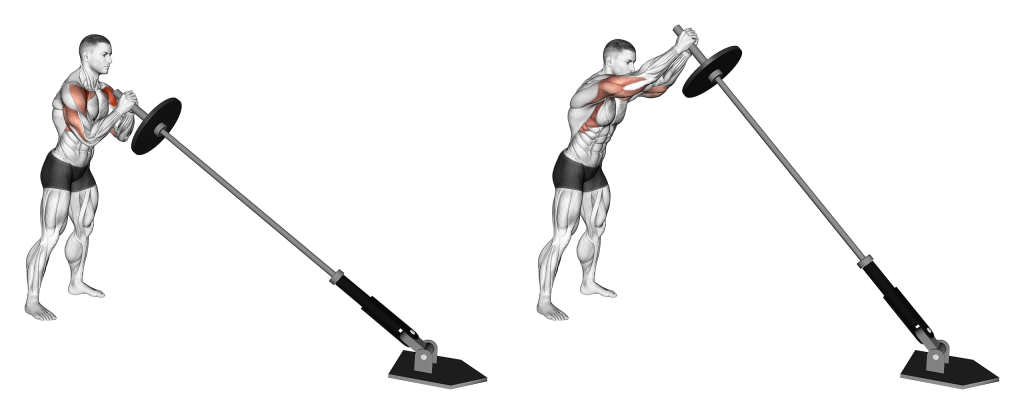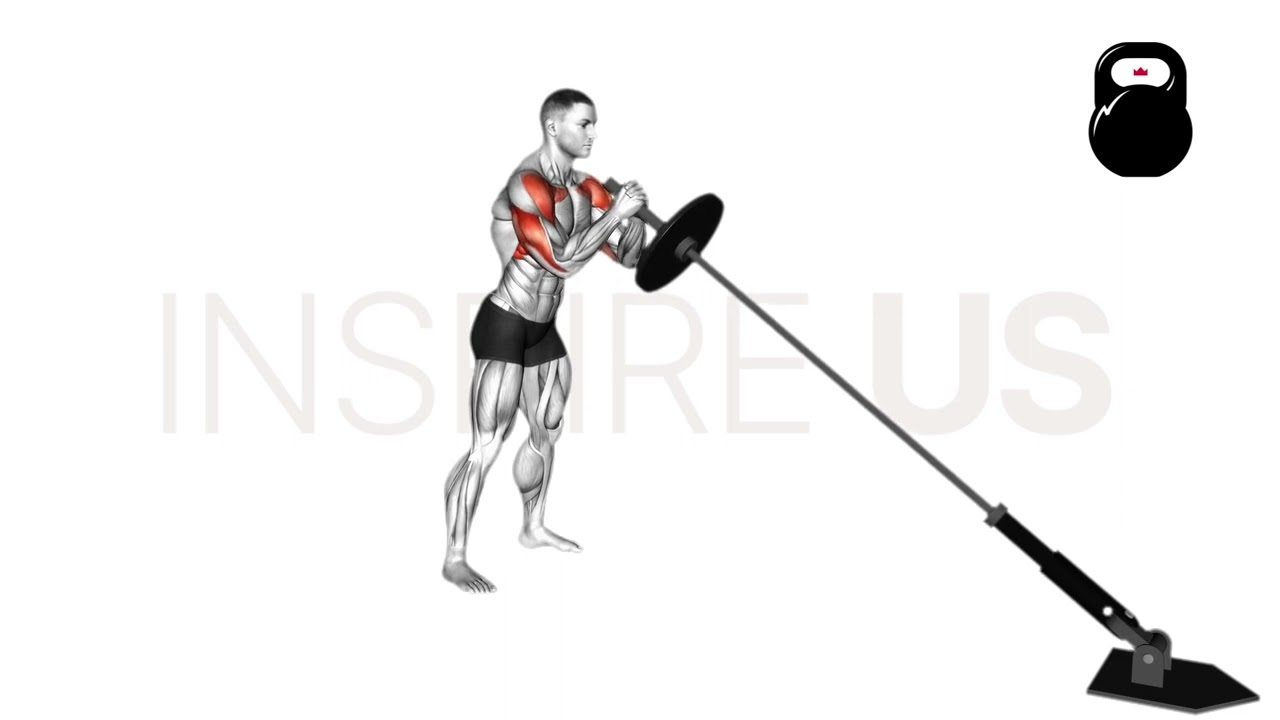Landmine Press Exercise Overview: Muscles Worked and More
The landmine press is a variation of shoulder press performed with one end of a barbell secured within a landmine apparatus.
Primarily a deltoid exercise, the landmine press is differentiated among other press exercises by its somewhat more forward bar path - and subsequently greater anterior deltoid head recruitment.
Landmine Press at a Glance
Equipment Requirements
Barbell, Weight Plate(s), Landmine Apparatus (Optional)
Main Muscles Targeted
Shoulders
Difficulty
Easy
Sets, Reps, and Load Recommendations
3-5 Sets of 6-10 Repetitions at a Moderate or Heavy Load
If No Landmine is Available
As is clued in by its name, the landmine press requires a landmine apparatus alongside a barbell and its requisite weight plates.
However, it is also entirely possible to perform the landmine press without an actual landmine - simply wedge the opposite end of the barbell beneath a sturdy and stable object.
How to Do a Landmine Press
- To perform a repetition of the landmine press, the lifter will begin by loading a moderate amount of weight onto the closer end of the barbell, ensuring the opposite end is secured in its position.
- Hoisting the end of the barbell up to clavicle-height in both hands, the lifter sets both feet a stable distance apart as they lightly brace their core and partially retract their scapula.
The lower back should remain neutral with the trunk itself angled slightly forwards for greater deltoid recruitment. - Now positioned correctly, the lifter drives through their palms and pushes the end of the bar both upwards and away from their chest - stopping once their elbows are fully extended.
- Having completed the concentric phase, the lifter then slowly lowers the bar back towards their chest in a slow and controlled manner, being mindful to follow the same path.
- Once the bar has returned to chest-height, the repetition is considered to be complete.
Additional Tips:
The landmine press is distinct from more commonplace deltoid exercises like the military or shoulder press, as it features a curved bar path and necessitates a similarly forward-angled trunk.
If the lifter is having difficulty balancing with the landmine press, adopting a staggered stance is perfectly fine.
Likewise, the angled bar path also means that proper shoulder and scapular positioning is all the more important.
Prior to beginning the repetition, the shoulder blades should be partially retracted so as to avoid internal shoulder rotation and impingement.
Of course, in order to maximize ROM, the scapula will elevate or “shrug” at the apex of the repetition - however, it should nonetheless remain retracted as it does so.
Sets and Reps Recommendation:
The landmine press is an exercise made most effective through lower volume and greater resistance.
3-5 sets of 6-10 repetitions at a moderate or heavy amount of weight should be ideal for most training goals.
What Muscles do Landmine Presses Work?
As a compound exercise, the landmine press actually targets more than just the shoulder muscles - the triceps brachii and pectoral muscles are also worked, albeit to a far smaller extent.

To be more specific, it is the anterior or forward-facing head of the deltoids that are targeted the most by landmine presses, whereas the clavicular head of the pectoralis major and triceps brachii act as secondary movers.
Common Landmine Press Mistakes to Avoid
Though even novices can perform the landmine press without much difficulty, some errors are more likely to cause injury than others. Avoid the following common mistakes in order to minimize said risk.
Involving the Legs
As is the case with any other strict pressing movement, the landmine press should not involve any actual force output from the legs whatsoever.
While it is indeed good technique to keep the knees bent and the hips somewhat hinged forwards, lifters should focus on solely working the muscles of their upper trunk.
If involving the muscles of the legs is a recurring issue, performing the landmine press kneeling or even seated can be an effective workaround.
Poor Range of Motion
In order to truly reap the benefits of the landmine press’s unique bar path, a full range of motion must be completed with each repetition.

To do so, each individual rep should begin and end with the elbows tucked close to the ribs, the end of the bar around clavicle-height.
Likewise, the highest point of each repetition should have the elbows fully extended outwards without any winging of the scapula or excessive tilting of the trunk.
Winging the Scapula/Internal Shoulder Rotation
One issue particularly important to the landmine press is proper positioning of the entire shoulder structure.
Because both a vertical and horizontal force direction is produced, lifters may occasionally neglect to position their scapula and subsequently wing it - greatly reducing stability in the shoulder joints and increasing the risk of injury.
At the start of the set, the lifter should partially retract their shoulder blades together, elevating them as they press the bar upwards.
Should You Do the Landmine Press?
The landmine press is an all-around solid shoulder exercise with a few inherent disadvantages that make it insufficient for truly comprehensive deltoid training.
If using the landmine press as the primary compound movement of a shoulder training program, remember to pair it with exercises like the lateral raise or face pull for more balanced muscular development.
References
1. Matthew M. Szelog. ATC, CSCS NSCA Coach (April 2016.) “The Landmine Press—Implementation and Variation” Vol 4, Issue 2. NSCA National Strength and Conditioning Association

